Hosts manipulate lifestyle switch and pathogenicity heterogeneity of opportunistic pathogens in the single-cell resolution
- PMID: 39190452
- PMCID: PMC11349298
- DOI: 10.7554/eLife.96789
Hosts manipulate lifestyle switch and pathogenicity heterogeneity of opportunistic pathogens in the single-cell resolution
Abstract
Host-microbe interactions are virtually bidirectional, but how the host affects their microbiome is poorly understood. Here, we report that the host is a critical modulator to regulate the lifestyle switch and pathogenicity heterogeneity of the opportunistic pathogens Serratia marcescens utilizing the Drosophila and bacterium model system. First, we find that Drosophila larvae efficiently outcompete S. marcescens and typically drive a bacterial switch from pathogenicity to commensalism toward the fly. Furthermore, Drosophila larvae reshape the transcriptomic and metabolic profiles of S. marcescens characterized by a lifestyle switch. More importantly, the host alters pathogenicity and heterogeneity of S. marcescens in the single-cell resolution. Finally, we find that larvae-derived AMPs are required to recapitulate the response of S. marcescens to larvae. Altogether, our findings provide an insight into the pivotal roles of the host in harnessing the life history and heterogeneity of symbiotic bacterial cells, advancing knowledge of the reciprocal relationships between the host and pathogen.
Keywords: D. melanogaster; Serratia marcescens; bacterial single-cell RNA-seq; host-microbe interactions; infectious disease; lifestyle switch; microbiology; pathogenicity heterogeneity.
© 2024, Wang, Li et al.
Conflict of interest statement
ZW, SL, SZ, TZ, YW, AL, KW, XJ, HC, YZ, ET, YW, YW, WL No competing interests declared
Figures

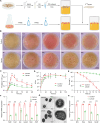


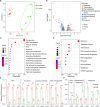

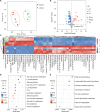
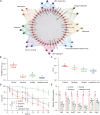
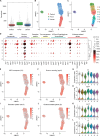

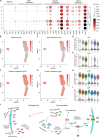

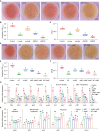


Update of
- doi: 10.1101/2024.02.14.580325
- doi: 10.7554/eLife.96789.1
- doi: 10.7554/eLife.96789.2
References
-
- Becattini S, Sorbara MT, Kim SG, Littmann EL, Dong Q, Walsh G, Wright R, Amoretti L, Fontana E, Hohl TM, Pamer EG. Rapid transcriptional and metabolic adaptation of intestinal microbes to host immune activation. Cell Host & Microbe. 2021;29:378–393. doi: 10.1016/j.chom.2021.01.003. - DOI - PMC - PubMed
MeSH terms
Associated data
- Actions
- Actions
Grants and funding
- 32470044/National Natural Science Foundation of China
- 2308085MC74/Natural Science Foundation of Anhui Province
- FKLRIB202401/Anhui Province Key Laboratory of Resource Insect Biology and Innovative Utilization
- RC342201/Talents in Anhui Agricultural University
- 2022YFE0132000/Ministry of Science and Technology of the People's Republic of China
LinkOut - more resources
Full Text Sources
Molecular Biology Databases

